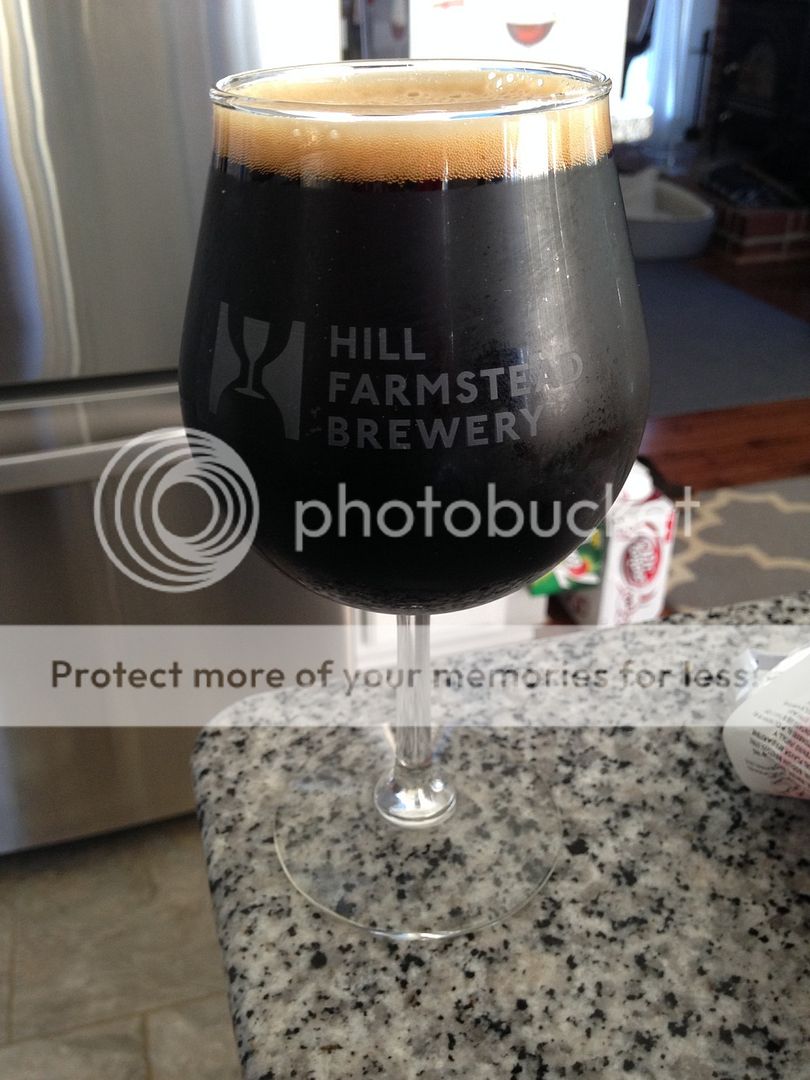And since we are discussing HFS and because I am going to have another bottle of this tonight, I will share a pic of the HFS "Twilight Of The Idols" Winter Porter. Without a doubt, one of the best winter porters on the planet.





At my friends brewery we cold crash in the ferm to drop yeast. Then harvest, and transfer to bright where it carbs in about under a day, then we transfer from the keg straight out of the bright. He doesn't filter his beers or use any finings and his beers are mostly clear with some haze.
They again also do not bottle any of their IPAs that I have seen either so maybe they do something different with those?
So there's no additional cooling in the bright? Where do you dry hop (if at all)?
And since we are discussing HFS and because I am going to have another bottle of this tonight, I will share a pic of the HFS "Twilight Of The Idols" Winter Porter. Without a doubt, one of the best winter porters on the planet.

I believe it..... their "Everett" porter is the best porter I have ever had. I am far more impressed with that porter than I am with their IPA's.







![Craft A Brew - Safale S-04 Dry Yeast - Fermentis - English Ale Dry Yeast - For English and American Ales and Hard Apple Ciders - Ingredients for Home Brewing - Beer Making Supplies - [1 Pack]](https://m.media-amazon.com/images/I/41fVGNh6JfL._SL500_.jpg)



I thought I remember reading somewhere that the mash time on his porter was super quick, mash temp was very hot and the final Gravity was high like in the 1.030 range or something?!
Yep - it is in the 1.030 range for FG.
https://www.homebrewtalk.com/showthread.php?t=351264
Dammmnnnn
Sorry if you've posted before, but how long will you keep one of these pint mason jars of slurry from the blonde ale before you won't use it anymore?i have been using conan for everything..... APA's, IPA's, Blonde Ale, Brown Ale, porter..... pretty much my house yeast. I either step it up from Heady Topper Cans or I use GigaYeast. I make a 1L starter 18 hours before I brew, and pitch the entire 1L right in while it is actively fermenting. First generation I always start it in a batch of 1.040 Blonde Ale. Low gravity, low hops. I harvest 6 one pint mason jars of slurry out of the blonde. I make sure I use one of those 6 jars on another blonde (to harvest 6 more jars). The other 5 I use in whatever I want.... usually hoppy brews. I always make a 1L starter and pitch it while actively fermenting. My gravity always ends up around 1.011-1.012 with this method. About perfect FG for my tastes.
Sorry if you've posted before, but how long will you keep one of these pint mason jars of slurry from the blonde ale before you won't use it anymore?
Everett is definitely my favorite Porter of all time. To me it actually drinks more like a Stout, in the sense that it has a good amount of roast to it. Just finished my last bottle this week, and I can't wait for him to come out with more. It's just a perfect balance of roast and chocolate from the malt.
Trillium does seem more hazy than Hill. Part of me thinks that JC is rushing his beers out a little early because of capacity and demand. I don't think he has enough time to drop out a good chunk of yeast. He's even publicly said that he likes his hoppy stuff better after about a month in the bottle. My boss has had stomach issues with Trillium lately. I think it's the excessive yeast. Hopefully when he opens his new place in Canton it'll allow him more time to refine his hoppy beers.
Sometimes he has to hold back a keg from the tap room for a day because of floaties. That tells me there isn't really any conditioning time between batches. Regardless, his beers are still awesome.

Okay, so I have completed a few batches using the higher Chloride to Sulfate ratio (2:1, I tired to replicate Braufessor's 'water model') and I have noticed a marked difference in the feel of the beer. I use distilled water and add salts and acids in an effort to gain as much flavor, silkiness, pillowy, etc., mouthfeel as I can. The bitterness still seems to have a little bite to it. I just recently had a Zombie Dust, whose IBU is 50. In the last 3 beers I did, I have been shooting for them to have an IBU of 50 as well. Mine seem to bitter a bit more..... firm.
What would happen say, if gypsum was cut out of the salt addition altogether? Has anyone done this? Gypsum 'enhances' bitterness... it doesn't create it. the carbonation adds a bite which adds to the bitterness effect so maybe it would balance an otherwise cloying effect.
Curios to know what people think of this.
Thanks.

I think the worst outcome is that you might possibly find that the hops become more muted than you prefer in an IPA.